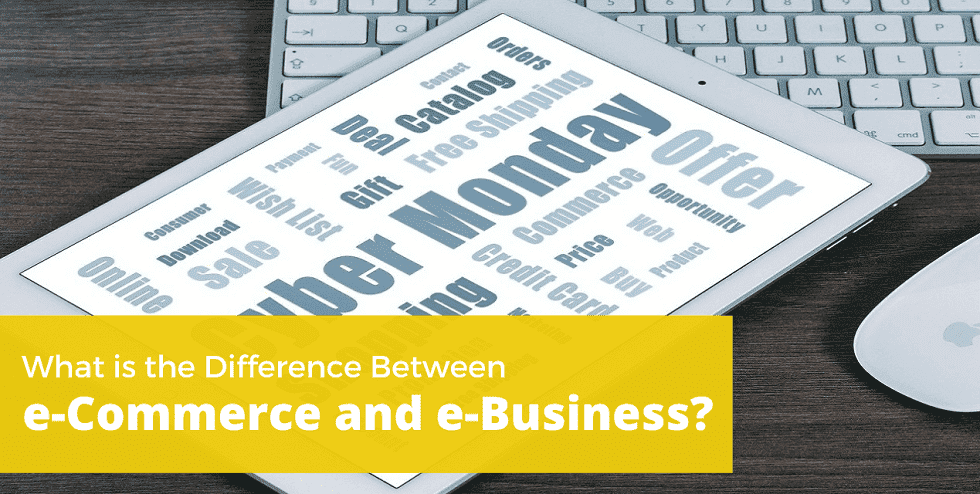Almost all of us have bought something from an online store – clothes, books, gadgets. In doing so, we participate in e-Commerce: digital commercial transactions, the act of buying and selling online.
You’ve heard the word “e-Commerce” a lot, but “e-Business”, maybe less so. And we might think – aren’t they the same thing? Is a business e-Commerce, or is commerce e-Business?
Some of us might use them interchangeably, but they’re not quite the same thing. Here we’ll explain what is the difference between eCommerce and eBusiness.
About e-Commerce
e-Commerce, or electronic commerce, involves online monetary transactions. This includes buying and selling products or services over the internet – or online shopping. It’s different from your typical brick-and-mortar stores, which involve physical, face-to-face transactions.
What does e-Commerce include?
e-Commerce consists of any online monetary transaction over the internet, using a website or app. Some notable examples of e-Commerce include Amazon, eBay, and MyDeal. eBooks and software also count as e-Commerce.
In general, e-Commerce activities include:
- Buying and selling products through online stores
- Accessing services through online portals
- Online ticket purchases
- Online payments (including taxes)
- Associated online customer support
There are three standard components to an e-Commerce transaction. This includes ordering, paying, and delivery. Of course, not all transactions involve these three components – for example, a person may order from an online shop but opt to pick up and pay at a store.
e-Commerce transactions take place either through websites, virtual marketplaces, or separate digital applications (apps).

What types of e-Commerce are there?
There are several e-Commerce business models:
1. Business to Consumer (B2C)
This business model involves a company selling products or services to a customer over the internet. Take a person purchasing clothes from a brand’s online store. This is what people commonly picture when they think of e-Commerce.
2. Business to Business (B2B)
B2B consists of two or more businesses transacting with each other. A software company might sell its service to another company for commercial use. Alternatively, hiring a web design and marketing agency also counts as B2B.
3. Consumer to Consumer (C2C)
Customers can sometimes purchase items and then resell them on online platforms to other customers. eBay and OLX are common C2C e-Commerce platforms, as are most other virtual marketplaces.
4. Consumer to Business (C2B)
When a customer offers their product or service to a business, that is a C2B business model. For example, a freelance graphic designer offers their services to a company’s marketing campaign.
e-Commerce and e-Business
The difference between e-Commerce and e-Business? e-Commerce is actually part of e-Business – which is the online presence of a business. It’s complex, but think of it as any business process or activity that takes place with the internet. That includes:
- Procurement of materials online
- Supply activities
- Online customer services
- Communicating with employees
- Communicating with business partners
- Client contact
- Online marketing
- Social media
Email marketing, for example, is a type of e-Business. It takes place entirely online, and a company carries it out electronically.

There are two types of an e-Business model:
Brick and Click
This is when a brick-and-mortar store or office has an online presence such as a website or an app. This business conducts sales both online and offline.
Pure Play
A business has only an online presence, and does not have a physical store or office. Airbnb, Trivago, and Booking.com are all examples of “Pure Play” e-Business models.
Key Differences
e-Commerce is the act of buying and selling goods and services online. This is a major component of e-Business, but not the only aspect. e-Business extends beyond monetary transactions – covering internal and external business activities.
e-Business does not require a commercial transaction to be considered an e-Business. Biometric security is e-Business, as is internal office communications.
It may seem complicated, so just keep in mind that e-Commerce is the online store of a business, while e-Business is all business activities conducted online. Something to think about the next time you go online shopping!
